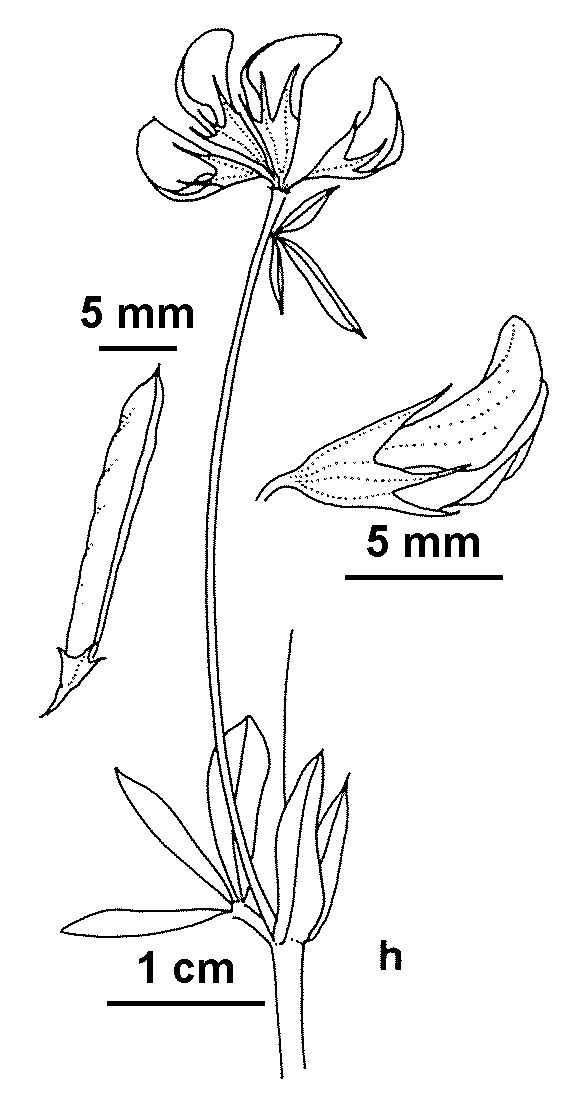Lotus corniculatus var. tenuifolius
L. Narrow Bird's-foot TrefoilPlant glabrous or sparsely pubescent; stems to 90 cm long. Leaflets more than 3 times as long as wide; terminal 3 linear to narrow-obovate, 3–12 mm long, 0.5–3 mm wide, apices acute. Calyx 4.5–5.5 mm long; corolla 7–10 mm long; standard broadly obovate, short-clawed, apex obtuse. Pod 1–2.6 cm long, 1–2 mm wide. Flowers Nov.–Apr.
VVP, GipP, WaP, NIS, EGL, HSF, Strz. Also naturalised Tas. Native to Europe, Asia, northern Africa. Scattered across southern Victoria most notably in South Gippsland; usually found in disturbed areas on damp sandy or clay soils.
Although some authors recognize this taxon at species level, in a taxonomic study of the L. corniculatus complex in Turkey, Small et al. (1984) found a substantial overlap in the morphology and ecology of the above taxa, concluding that they are better retained at varietal level.
Jeanes, J.A. (1996). Fabaceae. In: Walsh, N.G.; Entwisle, T.J., Flora of Victoria Vol. 3, Dicotyledons Winteraceae to Myrtaceae, pp. 663–829. Inkata Press, Melbourne.
 Spinning
Spinning
